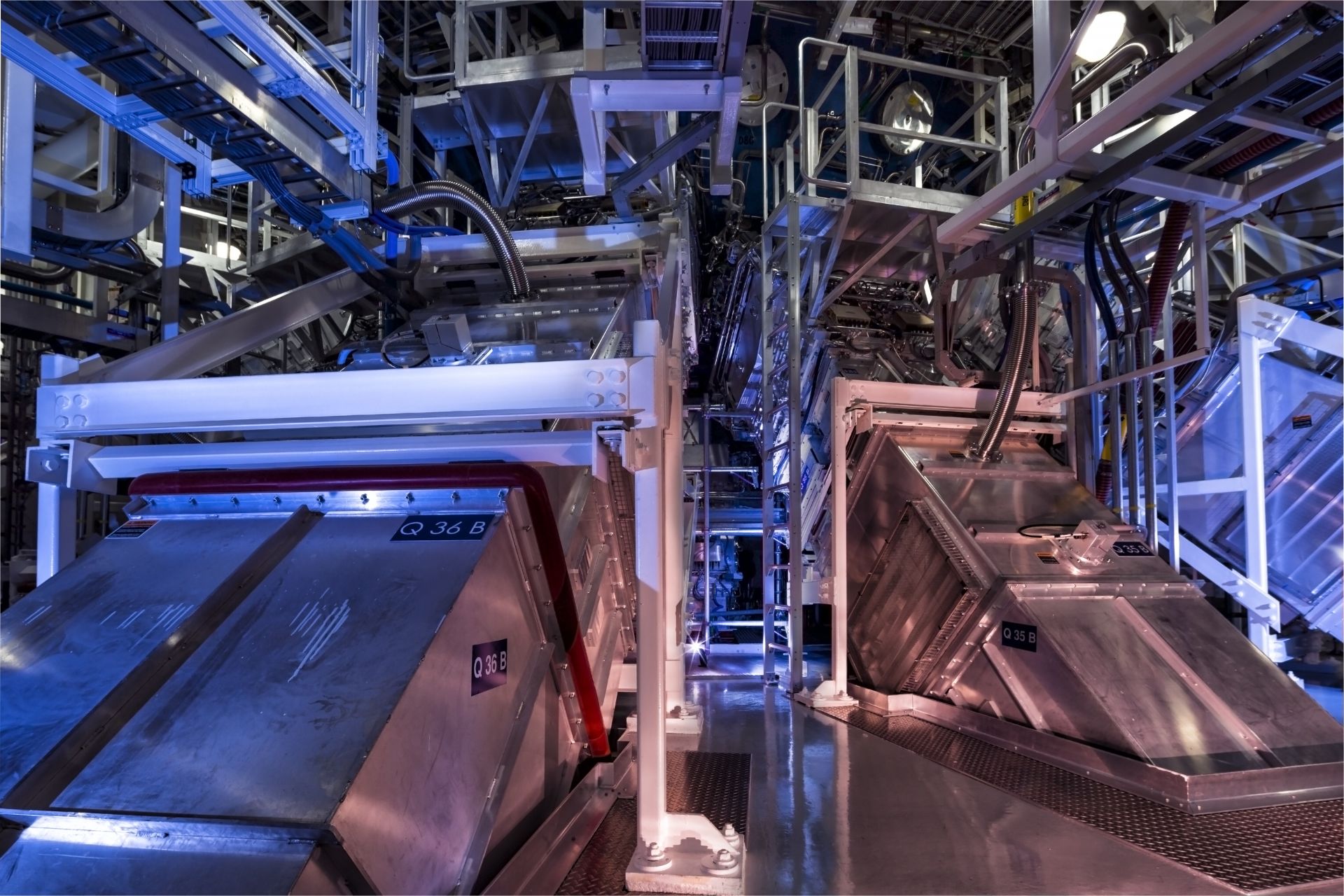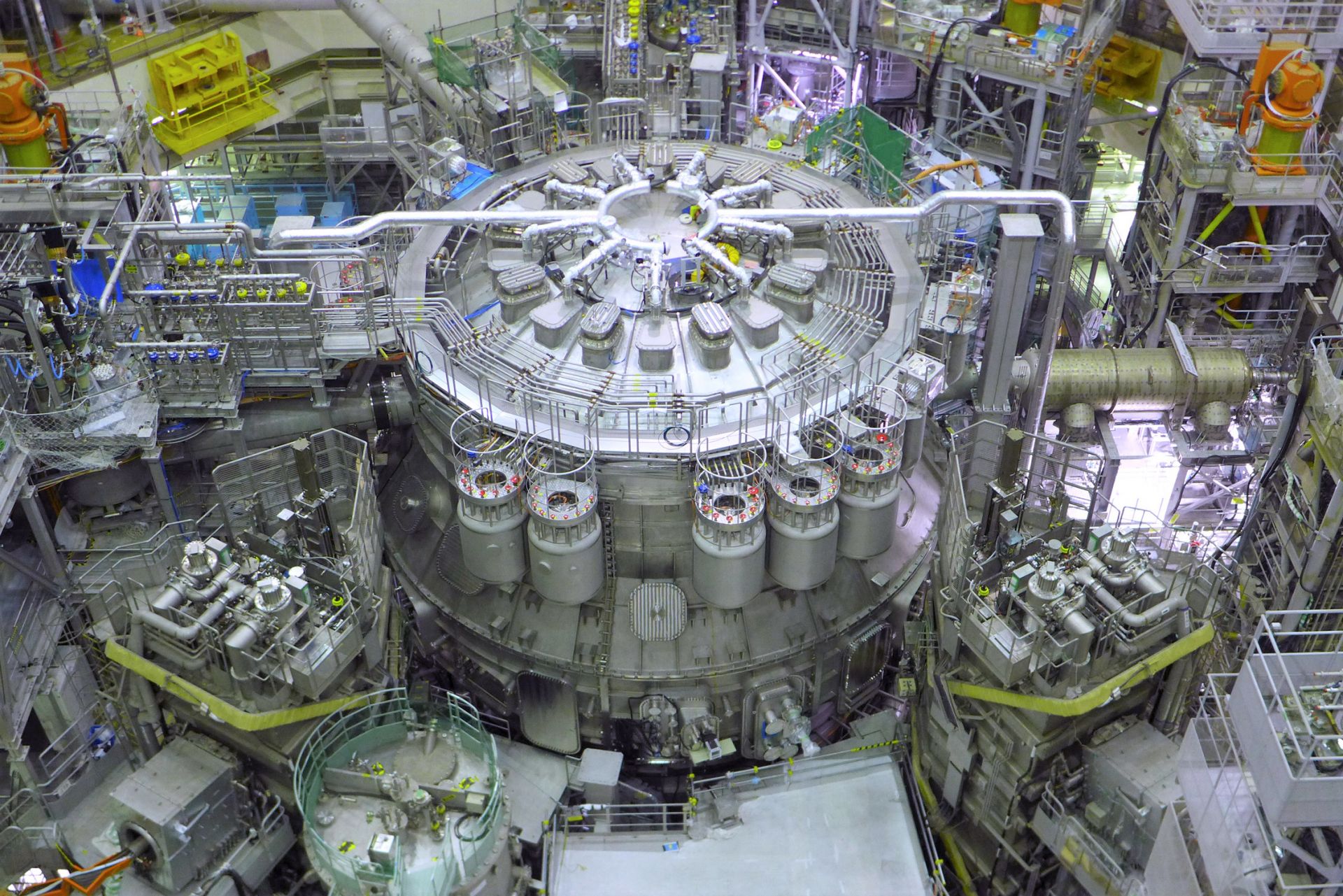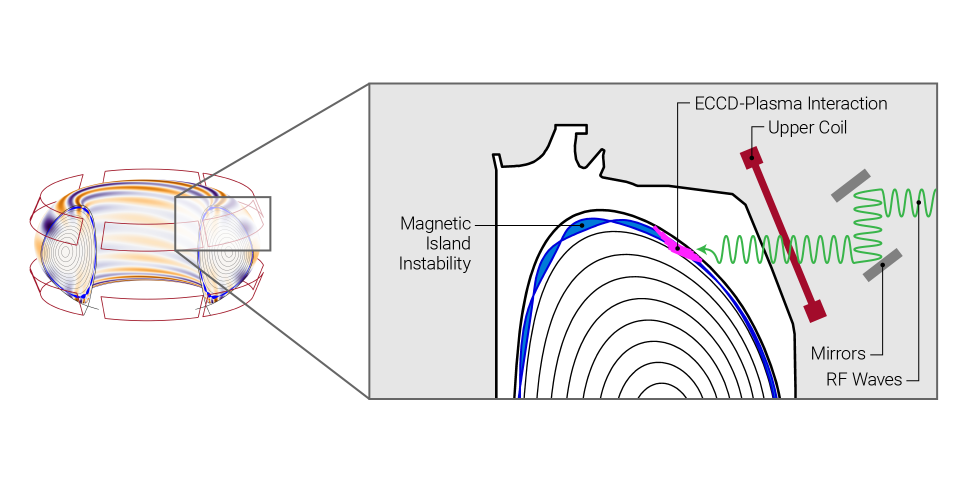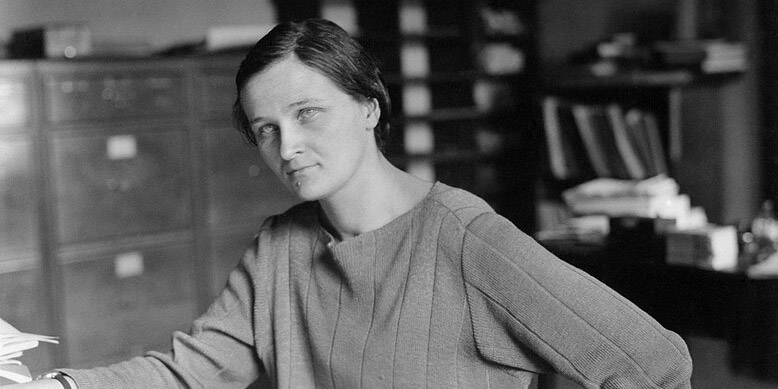What’s happening in big fusion? A global update

One year ago today, researchers at Lawrence Livermore National Laboratory achieved a record shot at the National Ignition Facility (NIF) that set the world talking about the potential of fusion energy. And the buzz hasn’t stopped. Fusion energy is getting its most significant attention yet on the world stage at COP28 in Dubai, UAE, where John Kerry, U.S. special presidential envoy for climate, delivered a keynote address today titled “An inclusive fusion energy future,” followed by a panel discussion.
Fusion is big. Over the past year, government funding of fusion energy research and development increased, and a multitude of private fusion developers are fighting for the merits of their method of plasma confinement. But today, we’re going big to look exclusively at four of the biggest government-backed fusion projects in the world today: NIF, JT-60SA, JET, and ITER.

Two of the 48 final optics assemblies that convert the wavelength of NIF’s beamlines and focus the laser light into the target chamber. (Photo: LLNL/Damien Jemison)
Record laser energy from NIF: Last December, NIF set a record by achieving fusion ignition for the first time, which immediately boosted the prospects for laser-driven fusion energy. On October 30 of this year, researchers at NIF set a new record, this time by firing more energy than ever before—2.2 megajoules—on an ignition target. This experiment achieved ignition—for the fourth time in the past year—and yielded 3.4 MJ of fusion energy, the second-highest neutron yield ever achieved at NIF.
Not every shot is one for the record books. LLNL’s second fusion ignition did not occur until July 30, when the NIF laser delivered 2.05 MJ of energy to the target, resulting in 3.88 MJ of fusion energy output, the highest yield achieved to date. On October 8, the NIF laser achieved fusion ignition for the third time with 1.9 MJ of laser energy resulting in 2.4 MJ of fusion energy yield.
“We’re on a steep performance curve,” said Jean-Michel Di Nicola, co–program director for the NIF and Photon Science Laser Science and Systems Engineering organization. “Increasing laser energy can give us more margin against issues like imperfections in the fuel capsule or asymmetry in the fuel hot spot. Higher laser energy can help achieve a more stable implosion, resulting in higher yields.”
Now that the laser has delivered 2.2 MJ of laser energy, the team is studying the results and preparing for the next shot.

The JT-60SA device is the result of collaboration between Europe and Japan as part of the Broader Approach Agreement. The facility is located at the seat of the National Institutes for Quantum Science and Technology in Naka, Japan. (Photo: Fusion 4 Energy/QST)
JT-60SA: The largest operational tokamak experimental device to date, JT-60SA, was designed and built in Naka, Japan, through a cooperative effort between Japan and Europe, and those parties chose December 1 to ceremonially inaugurate the facility by demonstrating a divertor plasma with 1 million amps of current.
The European Union’s Fusion 4 Energy explains that JT-60SA grew out of a scientific collaboration signed between the EU and Japan, called the Broader Approach Agreement, to promote the advancement of fusion through cooperative projects. Work on the device began in 2007 and assembly was complete in 2020. Since then, a series of technical improvements preceded plasma operations.
The JT-60SA team explained in a December 1 news release that the first plasma recorded in the device, on October 23, had a plasma current of about 130 kA. Testing carried out since October has been aimed at optimizing the plasma breakdown, increasing the plasma current, and optimizing control of the plasma current, shape, and position.
According to the December 1 announcement, “In early November ‘diverted’ plasmas were produced. In this configuration the magnetic field is arranged with a characteristic ‘X-point’ null with the effect that particles escaping the magnetic confinement are ‘diverted’ into a specific region. This contributes to higher plasma purity, more effective confinement, and ultimately higher performance.”

Interior of the JET tokamak. (Photo: EUROfusion)
JET: The Joint European Torus (JET) at the Culham Centre for Fusion Energy in Oxfordshire, England, is the only existing tokamak facility of its kind that can already operate with the deuterium-tritium fuel mix that will be used in future fusion power plants. And until JT-60SA began operations, it held the title of largest operating tokamak in the world. Decades of experiments at JET have optimized fusion reactions in deuterium-tritium and have helped the development of techniques to manage fuel retention, heat exhaust, and materials evolution.
JET construction began in 1978, and its first plasma was achieved in 1983 (40 years before JT-60SA). At JET’s core is a vacuum vessel that currently confines a 90-cubic-meter fusion plasma. The facility has set several records over the years, including a record Q-plasma (the ratio of the fusion power produced to the external power put in to heat the plasma) of 0.64 in 1997 and a fusion energy record output of 59 megajoules in a five-second pulse in December 2021.
High-performance deuterium-tritium experiments began in 1997, and since 2011 the first wall of the vacuum vessel has been made of beryllium and tungsten, mirroring the material choices of ITER. JET is now completing its final series of experiments and will cease operations by the end of the year, ahead of decommissioning scheduled to begin in 2024.

This image from early November does not show ITER construction, but work has begun to remove the two toroidal field coils and the thermal shield panels that created sector module #6 (in the foreground) for repair. (Photo: ITER Organization)
ITER: The ITER Council convened November 16–17 to review the performance of the massive international tokamak fusion project under construction in Cadarache, France, and discuss an update of the project baseline. ITER director- General Pietro Barabaschi reported on progress achieved on repairs to key components—the vacuum vessel bevel joints and thermal shield cooling pipes—as well as ongoing manufacturing, assembly, and installation.
The ITER Organization is working to establish a new cost and schedule baseline, taking into account recovery from past delays due to the COVID-19 pandemic, technical challenges of completing first-of-a-kind components, and enhanced testing of components to offset future risks. “A critical aspect is better assembly sequencing in order to achieve the fastest path to the start of ITER nuclear operation,” according to a November 23 press release on the council meeting.
ITER is much bigger than JT-60SA, and bigger still than JET. While the JT-60SA weighs 2,600 metric tons and has a plasma volume of 130 cubic meters, ITER will weigh 23,000 metric tons and boast a plasma volume of 830 cubic meters once it begins operating.
When ITER is completed, it will have both JT-60SA and JET to thank. Deuterium-tritium experiments in JET have assisted the ITER team, and according to the ITER Organization, ITER has “been closely associated with the [JT-60SA] upgrade project through collaboration agreements that ensured that it could learn from the assembly, installation, integrated commissioning, and operation of the JT-60SA device.”
ITER’s current directors have a personal interest in JT-60SA and are carrying lessons learned from its construction to ITER: Barabaschi and ITER deputy director general Yutaka Kamada had each led the JT-60SA project for their respective stakeholders for a decade before joining the ITER Organization.










